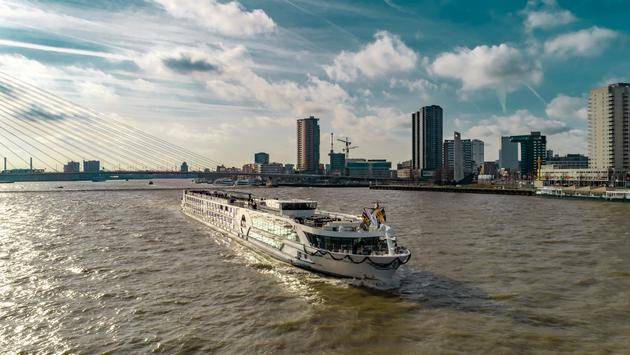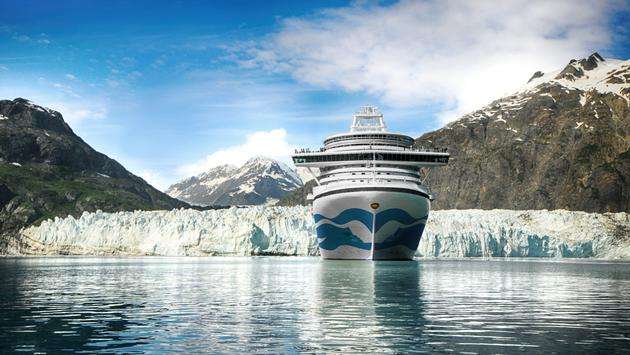May 12,2023
RV Camping at KOA Campgrounds
by Bin Xu
KOA Campgrounds offer a range of hookups for RV camping, including:

Full hookups: Full hookups let you directly connect your RV to water, electricity and sewer, allowing you to enjoy the great outdoors without giving up any of the basic conveniences of home. The steady supply of water comes in handy when bathing and cooking, and the sewer hookups let you easily dispose of your waste without having to dump the tank at the end of your stay. The electrical hookup provides sufficient electricity to power all of the devices in your RV, including the heating and air conditioning system. KOA offers both 30- and 50-amp service, letting you connect to the service that best suits your RV's system.
Full Hookups KOA offers both 30- and 50-amp service, letting you connect to the service that best suits your RV’s system.
Water/electric hookups: Also known as "partial hookups," hookups that offer only water and electricity are often a great choice for smaller RVs and pop-up campers.
Also known as "partial hookups," hookups that offer only water and electricity are often a great choice for smaller RVs and pop-up campers. Dry hookups: These hookups offer a power source for your camper, but no water or sewer hookup. If you pick a campsite with a dry hookup, don't worry — all KOA locations offer clean bathrooms with hot showers and fresh water.
RV campsites also come in a number of styles:
Back-in RV Sites: These sites feature a 60-degree slant and a wide clearance, allowing you to back your camper into position. Once you've backed your rig into place, you can easily connect it to our hookups and get your camper up and running.
These sites feature a 60-degree slant and a wide clearance, allowing you to back your camper into position. Once you've backed your rig into place, you can easily connect it to our hookups and get your camper up and running. Pull-Thru RV Sites: If you feel uneasy about backing your large RV into place, reserve a Pull-Thru RV Site instead. These sites provide the same 60-degree slant, but you can drive straight through the site and park your RV in the perfect position.
If you feel uneasy about backing your large RV into place, reserve a Pull-Thru RV Site instead. These sites provide the same 60-degree slant, but you can drive straight through the site and park your RV in the perfect position. RV Sites with KOA Patio®: RV Sites with a KOA Patio®, offer a spacious patio area and extra amenities such as picnic tables, patio furniture, additional seating, fire feature and much more. Get in touch with specific KOA locations to learn about the specific site amenities they offer.
RV Sites with KOA Patio® RV Sites with a KOA Patio®, offer a spacious patio area and extra amenities such as picnic tables, patio furniture, additional seating, fire feature and much more.
Regardless of the type you pick, you'll appreciate how level the sites are at KOA Campgrounds. A level site not only provides your camper with more stability, but it may also be necessary for your appliances to operate properly. Sure, you could use ramps or leveling blocks. If you park your camper on a level site to begin with, though, leveling is one less step you have to go through before you can begin enjoying your RV camping adventure.
Are you worried about the length of your rig? Motorhomes range from 17 to 40 feet. Fifth wheels and travel trailers range from 10 to 45 feet. Measure your camper to ensure you reserve a site that fits its size. KOA RV Sites are made to accommodate a wide range of camper lengths, but it's still best to check the site's exact length to that of your RV. If you have a trailer-style camper, make sure to include the length of your tow vehicle when measuring.
How to Plan a Successful RV Trip in 2022
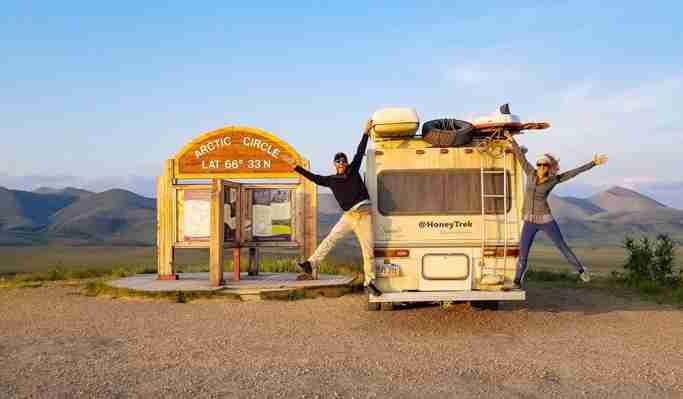
Posted: 8/27/20 | August 27th, 2020
Since international travel on pause, people have turned to exploring their own backyards. From the U.S. to Canada to England, Europe, and New Zealand, people are getting in cars, campervans, and RVs and heading out on road trips. After all, it allows you to social distance while still getting outside!
Today, I’ve invited my friends Mike and Anne from HoneyTrek to share their RV tips and advice. They’re full-time RVers and will help you get your next RV adventure started easily and on a budget!
A couple of years back, the van life craze had everyone curious about rubber-tramping across North America. Maybe you thought, nah, I prefer my city apartment or jet-setting abroad.
Then COVID-19 hit. All of a sudden, getting out of Dodge with a house on wheels started to sound really good, didn’t it?
There is no doubt that RVing is one of the easiest and safest ways to travel right now. No crowded planes or questionable hotel rooms required — an RV gives you the freedom to explore and the peace of mind of having your own space.
Over the course of our eight-year “HoneyTrek” we’ve tried virtually every style of travel — backpacking, house-sitting, small-ship cruising, backcountry camping, five-star honeymooning, etc. — but the day we rented a campervan in New Zealand, we knew this was our preferred mode of travel.
For the past three years, we’ve been traveling full-time in our 1985 Toyota Sunrader “Buddy the Camper,” from the Baja Peninsula to the Arctic Circle and 47 states in between.
We’ve learned a lot along the way and are excited to share what we think are the most important things to know before setting out on your RV journey.
Here’s a video we just filmed which covers all the basics (or read the post below):
How to Pick the Right Size RV
For maximum adventure and comfort, we’d recommend a camper around 21 feet long. We know those big RVs tricked out like a penthouse apartment look tempting, but remember that every foot in length costs mobility. A shorter rig allows you to:
Access rugged terrain
Fit in a normal parking space, even parallel park
Avoid length restrictions on some of America’s most beautiful winding roads and ferry rides
Get better gas mileage (Most rigs get 6–10 MPG. Ours gets 19.)
Have less stuff to break, which means more time exploring and having fun!
And, while even shorter 16- to 19-foot-long campervans do have the ultimate mobility, there are a few things you should know before you fall for that adorable Westfalia or stealthy Sprinter.
First, life ain’t so pretty without your own indoor shower and bathroom. And, while we respect the vanlifers who make do with public restrooms, bucket toilets, and catholes (digging a hole outside when you need to go to the bathroom), let us tell you the virtues of having a flushing loo: privacy, cleanliness, and autonomy.
We can be in a city center or a protected conservation area and conveniently and responsibly stay the night. In these unprecedented times, it’s more important than ever to be self-sufficient and not rely on shared facilities.
Besides a bathroom, a 19- to 22-foot long RV is big enough to also give you a proper bed and ample storage while still being small enough to explore with wild abandon.
How to Get Power (A.K.A. the Virtues of Solar)
RVs and campers have a house battery to run the lights, water pump, fans, and power electronics. Here are the various way to keep it charged:
Drive a few hours per day
Pay to plug in at a campground
Run a generator
Have solar panels
Your average road trip will likely give you enough charge from driving, but if you really need power, an RV park is never far away. If you are looking to slow-cruise the wilderness and lower your environmental impact, solar panels are a must. The simplest and most affordable option ($70–150 USD) is to get a portable panel and use it whenever you’re stopped in order to charge up the house battery of your RV. This obviously isn’t as convenient or powerful as an integrated system, but it should be enough to keep your phone and laptop charged.
If you are in this for the long haul, though, you’re going to want to install a solar system. We bought 300 watts of flexible monocrystalline solar panels, installed them to the roof, and wired them all together with a charge controller, lead-acid battery, and power inverter in about 20 hours — all for $1,200 USD.
If you want the best efficiency and lifespan, spring for a lithium-ion deep cycle battery, like the Relion RB100. If a DIY electrical project sounds too scary, you can have it professionally installed for $1,000–2,000 USD. We know that’s is a chunk of change, but investing in solar has allowed us to spend the last three years without having to ever pay for electricity, worry about running out of power, or generating any greenhouse gases.
How to Get Internet
Your smartphone is your on-the-go router. It’s important to use a carrier with an extensive national network (AT&T or Verizon) so as to get reception in remote areas (the dream is to be using your laptop from a secluded beach, right?).
We use our Verizon phone as a hotspot for our two laptops, getting 50GB unthrottled per month, plus unlimited calls and texts, for $109 USD.
While that’s a decent amount of data, it’s not a home internet plan through which you can be streaming all day. If you’ll be on the road for more than a couple weeks, monitor your usage with the GlassWire app and install NetLimiter on your laptop to help ration your data. Save your big downloads and uploads for free Wi-Fi zones.
We love working at libraries, not just for the internet but for their inspiring spaces, peace and quiet, community offerings, and open invitation to stay all day.
And, when all else fails, McDonald’s and Starbucks have wifi that’s usually strong enough to tap from the comforts of your camper.
How to Find Places to Camp
Your basic campground typically offers a flat parking spot with a picnic table, fire pit, and shared bathroom for $10–30 USD per night. If you bump up to $35–80 USD a night, you’re in RV park territory and will likely get power, water, sewer, and shared amenities like a clubhouse and a pool.
But did you know there are tens of thousands of free campsites scattered around the wilds of the USA? The federal government has reserved 640 million acres of public lands (national forests, BLM [Bureau of Land Management] land, national conservation areas, etc.) for your enjoyment. These sites are pretty bare-bones (sometimes it’s just a clearing in the forest) but, since we have a self-contained camper with our own drinking water and bathroom, all we really want is a peaceful spot with a good view.
This style of independent camping has many names: dispersed camping, wild camping, dry camping, freedom camping, and most commonly “boondocking.” We find our favorite boondocking spots via the Ultimate Campgrounds app, which we use to see what sites are nearby.
If we’re striking out on that app, we turn to iOverlander and
With these apps, we’re able to find great camping on the fly and rarely pay a dime.
That said, there is a time and place for more traditional campgrounds. They can be a great way to meet other campers, enjoy a few extra services, or stay in the heart of a national park. is the main campground portal (290,000 listings!) for public (national and state parks) and private campgrounds. also has extensive offerings and is our favorite for unique sites on private land — it’s like the Airbnb of camping. KOA has tons of options too.
If you know there is a certain place you want to be on a specific night, you can book in advance. But also just don’t be afraid to go with the flow — there is always a beautiful boondocking spot somewhere!
Urban Boondocking
Speaking of boondocking, it’s not just for the woods. We have spent countless nights “camping” in the heart of cities, and if you adhere to a few simple rules, you can feel confident doing the same:
Obey all street signs and curb markings and keep the meter fed. If it says “no overnight parking,” take heed. If there is any ambiguity in the signage (street cleaning conflicts, permit parking, etc.), find another spot.
Don’t overstay your welcome. We usually limit our time in the same parking spot to two nights.
Don’t draw attention to yourself with excessive lights, music, noise, etc. Even though our 1980s RV is far from a stealth camper, we have slept in over 50 cities and never been asked to “move along.”
Be smart, be respectful, and the world is your campground.
How to Save Money on Gas
We know gas is only around $2 USD/gallon at the moment, but when it comes to your long-term travel budget, every bit counts. Here are some tips to save at the pump:
Get the GasBuddy app. It allows you to see the gas prices along your route, often saving upwards of 50 cents per gallon, particularly if you can wait to cross a state line or get farther off the highway.
Get yourself a Discover card and/or Chase Freedom Unlimited card; certain months of the year, they offer 5% off your fill-up.
Sign up for gas station rewards programs, especially Shell and Pilot, which give 3–5 cents off per gallon.
Keep your tires inflated at the recommended PSI, and drive under 55mph. In addition to the gas savings, it’s safer and prolongs the life of your rig.
How to Find the Back Roads
Set your GPS to “avoid highways” and you’ll discover just how beautiful this country can be. Interstates have blazed straight lines across the nation but the old network of roads, working with the contours of the land and connecting historic towns, still exists.
The best routes are America’s Byways, a collection of 150 distinct and diverse roads protected by the Department of Transportation for their natural or cultural value.
Even better than that website (because you can’t rely on back roads’ cell reception) is a hard copy of the National Geographic Guide to Scenic Highways and Byways. It maps out the prettiest drives in every state, with something to marvel at even in “the flyover states.” We refer to it every time we start a big drive and discover interesting landmarks, quirky museums, scenic viewpoints, quintessential eateries, and short hikes, which always improves the ride.
Take Glamping Breaks
To make sure you don’t burn out on small-space, off-grid living, treat yourself to the occasional glamping getaway. Creative outdoor accommodations with a plush bed, hot shower, and friendly host always remind us how much we love the woods.
When we get to a glamp camp, we can walk away from our normal responsibilities (setting up camp, cooking for ourselves, and DIY everything) and truly relax. A gorgeous treehouse, dome, yurt, or safari tent has been designed with your enjoyment in mind, and if you need anything, your host is at the ready.
A little pampering and fresh take on the outdoors will give you the energy to keep on truckin’.
To find fabulous getaways along your route, check out our glamping book, Comfortably Wild: The Best Glamping Destinations in North America.
How to Protect Yourself and Your Ride
You’ll be exploring remote areas, going down rough roads, and having wild adventures (get excited!). Consider these three forms of protection and you’ll be ready for whatever comes your way:
RV insurance – While this is specialty car insurance, the good news is it can be cheaper than insuring a sedan (we pay $375 USD a year for our Progressive plan).
– While this is specialty car insurance, the good news is it can be cheaper than insuring a sedan (we pay $375 USD a year for our Progressive plan). Travel insurance – While most people think of travel insurance for big international trips, it usually kicks in 100 miles from your house, covering health emergencies, trip delays, canceled reservations (from campgrounds to river rafting excursions), and a variety of other snafus. Rather than getting insurance every time we hit the road, we use the Allianz All Trips Premier Plan so we’re automatically covered wherever we go throughout the year.
– While most people think of travel insurance for big international trips, it usually kicks in 100 miles from your house, covering health emergencies, trip delays, canceled reservations (from campgrounds to river rafting excursions), and a variety of other snafus. Rather than getting insurance every time we hit the road, we use the Allianz All Trips Premier Plan so we’re automatically covered wherever we go throughout the year. Roadside assistance – Good ol’ AAA does have RV plans, but we like that Good Sam is designed specifically for RVers and doesn’t charge a premium for it. An annual membership covers towing RVs of all sizes, tire blowouts, running out of gas, locking your keys in your vehicle, plus lots of other benefits and travel discounts.
***
As full-timers, we’re incredibly passionate about RVing and lot to share road trip itineraries, advice about buying a vintage camper, and lessons learned from three years on the road. While there is a lot to know about RV travel, renting a camper is a safe and easy way to get started. And there is a wonderful RV and #vanlife community online that will be happy to help too.
Mike and Anne Howard left on their honeymoon in January 2012 and never came home. They created to chronicle their journey across all seven continents and help people realize their travel dreams. They are the authors of National Geographic’s bestselling book, Ultimate Journeys for Two, and the first-ever book on glamping in North America, Comfortably Wild.
Winter RV Camping: 10 Essential Tips
Winter RV road trips are more popular than ever this year as people look for socially distanced vacations that don’t involve airplanes or hotels.
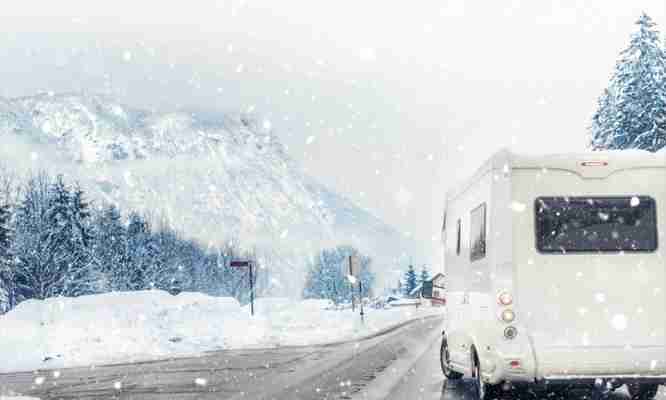
For some travelers, a winter RV road trip in 2020 might mean driving to grandma’s house for the holidays but sleeping in your RV rather than a bedroom there. For others, it’s an opportunity to stay away from people and ditch the Christmas tree in favor of living trees.
But while renting an RV for a road trip may seem like a safer alternative to traditional travel in the midst of COVID-19, winter RV road trips present their own challenges. Here are 10 things to know before taking your RV out in the snow.
Advice for winter RV road trips
1. Decide whether your RV needs to be winterized — and learn what that actually means
You’ll probably see the phrase “winterizing your RV” when planning a road trip someplace chilly. Your task is to figure out if your RV has already been winterized, and whether it needs to be.
Winterizing your RV means you’ve taken steps such as:
Emptying water tanks.
Draining the water heater and water lines.
Disabling plumbing in order to prevent the pipes (which run along the undercarriage of the RV) from bursting or being destroyed.
If you’re traveling someplace where temperatures are going to get below freezing, you’ll need to winterize your RV. It’s a process you can do yourself, though your local RV company may also be willing to do it for you.
“If you’re traveling in a cold weather state, chances are the vehicle you’re renting will be winterized before you take it out on the road,” says Jennifer Young, co-founder of RV rental site Outdoorsy.
But winterizing your RV is not always a must-do, especially if temperatures at your cold destination won’t actually get below freezing. If a vehicle has been winterized, you won’t be able to use the sink or bathroom inside the RV as usual (unless you take extra steps like using antifreeze).
2. Get the right heater
If your campsite is hooked up to electricity, then an electric heater is your best bet to save money. But if you’re camping somewhere without an electric hookup, avoid using the onboard heat systems. That’s because most onboard heating systems use propane, which JP Smith, full-time RV traveler and founder of the Ultimate RV Checklist app, warns will last only a couple of days.
A small, portable propane heater "will do the same job and only ‘sips’ propane compared to guzzling it,” he says. “It’s also plenty for the smaller spaces of RVs.”
As far as the RV’s built-in furnace, keep it clean by using compressed air or a soft brush to remove debris. Otherwise, obstructions may prevent air from flowing properly.
3. Insulate your RV properly
With the right insulation, you may not need to worry about a separate heater at all. Good insulation might also mean not needing to wear a heavy jacket indoors or using a sleeping bag every night. Some options include:
Don’t forget the slide outs: If your RV has slide outs (a cut-out portion of your RV that increases the living space available), RV blogger Ashley Mann recommends placing a foam board of insulation underneath each of your RV slides to reduce drafts. “Just don’t forget to remove the foam before pulling in your slides,” she warns.
Consider an RV skirt: It’s exactly what it sounds like — a skirt, often made of vinyl, that wraps around your RV. By creating a barrier of insulated air, the skirt is designed to keep the RV warmer inside. In turn, that helps prevent pipes from freezing, while allowing you to burn less propane (thus saving energy and money). RV skirts generally can cost as low as $150, but can cost thousands of dollars, depending on factors like quality and whether you need custom sizing.
Don’t have an RV skirt? “In a pinch, you can also pack snow around the battery bays,” advises travel blogger Taryn Shorr. “It’s a shockingly efficient natural insulator.”
4. Prepare your pipes and tanks so they don't freeze
It’s not just you who needs to stay warm: Your RV’s pipes need protection from the freezing cold too. Water leftover in pipes and hoses can turn to ice and expand, which can cause them to crack or burst.
Travel blogger Bettina Staerkle learned it the hard way during a winter trip through Alberta, Canada. The hot water tank froze and burst, flooding the inside of her RV.
If you’re traveling in an RV on only a few cold nights per year, Staerkle said an easy method to prevent pipes from freezing is to keep a faucet slowly running through the night, allowing the water to constantly move through the pipes. Moving water requires a lower temperature to freeze than sitting water.
Another easy alternative is to purchase heat tape, which you wrap around your RV water hose. Plug the tape into a power source, and the tape will remain heated as long as it is plugged in, keeping the hose warm.
5. Check your tires
If your RV doesn’t have snow tires and you’re planning to drive through icy road conditions, make sure you have a set of snow chains. In fact, driving with snow chains during adverse weather conditions is a requirement on some roads.
But depending on where your RV came from, you might not even be able to drive on those roads. Many big RV rental companies, such as Cruise America, explicitly prohibit renters from using chains on their motorhomes, as they can cause damage.
6. Pack the right gear
While you want to avoid overpacking, sometimes winter can call for a few extra items. Consider packing:
Vent insulator pillows: A $10 to $40 pillow that you insert into openings like roof vents to keep warm air in and cold air out. “When we first started RVing, we didn't realize just how much heat was escaping from our living room through the vents,” says travel blogger Laura Peters. “These cheap pillows saved us hundreds of dollars on heating throughout the winter and we highly recommend them to any first-timers.”
Apps to check the weather and road conditions: Apps like Weather Hi-Def Radar include snowfall and wind speed maps, which might be particularly helpful when driving an RV in the winter.
Gear to keep you warm: Pack electric blankets, hand warmer packets and waterproof, windproof clothing.
Slippers: You probably don’t want to be walking around your RV in dirty or snowy shoes; slippers can protect your feet from cold floors.
A snow shovel and ice scraper: You might need to dig out your RV and scrape ice from your windows when it’s time to drive.
Extra emergency items: Whether it’s additional driving equipment like chains or camping goods like canned food, make an exception to the "don’t overpack" rule when it’s in the name of emergency supplies.
7. Keep cold air from coming in the windows
You might not get to wake up to a winter wonderland, but keeping the shades closed when it’s snowy will keep you warmer.
“It sounds counterintuitive, but the extra layer creates an air gap from the window and keeps some of the cold away from entering the main coach,” says Jerome Braga, who has been traveling in his RV since 2015.
As far as the windows themselves, make sure they’re properly insulated.
“Insulating the windows with a plastic film that shrinks when you heat it makes a big difference in reducing heat loss,” says Ashley Mann, who runs the RV Inspiration blog.
8. Check the campground schedule
If you like to drive without an itinerary and stop whenever you feel like it, you’ll still need to do some advance planning. Many campgrounds close in winter, so verify potential campsite locations are open before you hit the road.
But even if a campground looks officially closed online, it doesn’t hurt to call.
“Many campgrounds and RV parks that close in winter will accept campers on a day-by-day basis,” says Damian Tysdal of the Safe Travels podcast. “They don’t want to be ‘officially’ open, but are often around and are willing to have campers.”
9. Drive carefully
Driving an RV in harsh winter weather requires the same common sense you need to drive an RV any other day: Slow down and avoid being on the road when it's dark.
But winter brings new variables: Motorhomes typically have rear-wheel drive (as opposed to front-wheel drive in most passenger vehicles), so the brakes will handle differently on slippery roads than what you’re used to. With RVs, it’s even more important that you ease on the brakes, and leave plenty of room between you and the vehicle ahead.
And when driving in snowy conditions, put your headlights on the low beam setting. “The brighter your lights are, the harder it will be for you to see through the snow and keep your eyes on the road,” Young warns.
10. Head south
When all else fails, set your GPS to go south. At least that’s the advice of full-time RV traveler Michelle Fishburne.
“Just the thought of road ice and an RV causes me to flinch and brings back scary images of when my father tried to control the slide of our car as ice got the better of us. We camped in a parking lot because it was too dangerous to continue driving,” she says. “I'll skip the stress and the potential for standing in the frigid, snowy air as I call for help.”
Fishburne drives throughout the U.S., but her winter route will take her from Raleigh, North Carolina, through Texas and Arizona, and will eventually end up in San Diego, California.
“If you aren't accustomed to driving on ice and snow in your car, don't even think about trying it in a motorhome,” she says.
Final thoughts on winter travel trailer camping
A winter RV road trip can be a grand adventure, and a refreshing way to travel in nature without having to get on an airplane or ending up in a busy hotel lobby. Pack your own food to make on the stovetop and marshmallows to roast over the fire, and you won’t even have to enter a restaurant.
But a cold-weather RV road trip presents its own set of unique challenges: You’ll need to make sure your RV is set to handle winter conditions, and you'll have to track down additional winter gear and take extra precautions when driving and camping that a warmer destination wouldn't necessarily require.
If all else fails, you can always take your RV out this winter, but head south for a warm-weather getaway.
How to maximize your rewards
Leave a Reply
Please sing in to post your comment or singup if you dont have account.
Favorite articles
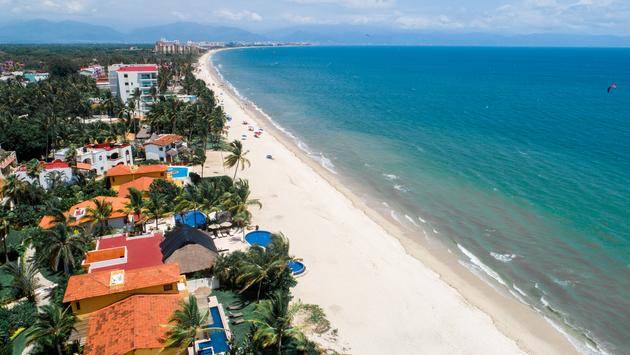
Riviera Nayarit Consolidates Air Connectivity With New Routes
January 03,2022

Looking for a Black Friday Deal? Try Summer 2021 Travel
December 30,2021
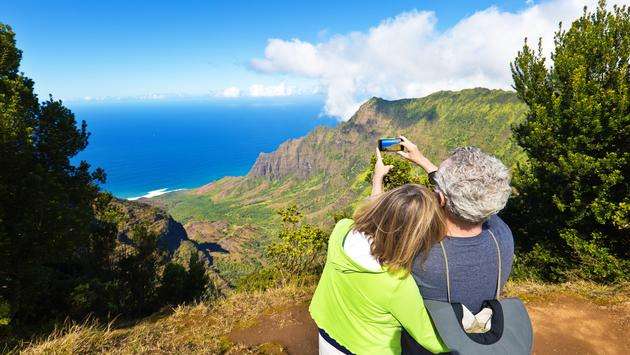
Kauai Drops Out of Hawaii’s Pre-Travel Testing Program
December 28,2021
Most popular articles
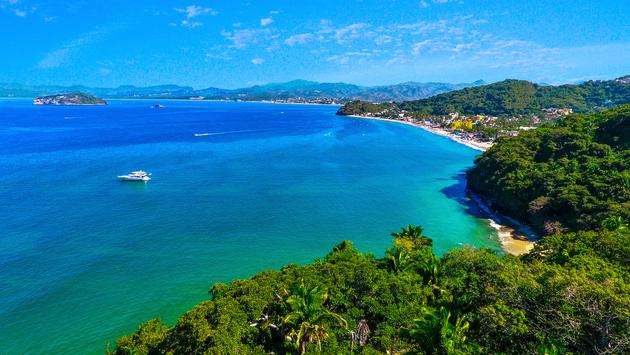
Riviera Nayarit Proves Resilience With New Hotel Openings
January 04,2022
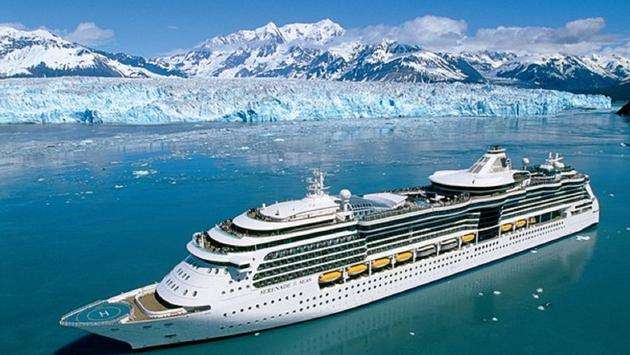
Large Cruise Ships Return to Alaska
December 29,2021

How to Score Free Disney World Theme Park Tickets in 2021
December 26,2021

Hotel Xcaret Arte To Make Its Debut in July 2021
December 25,2021
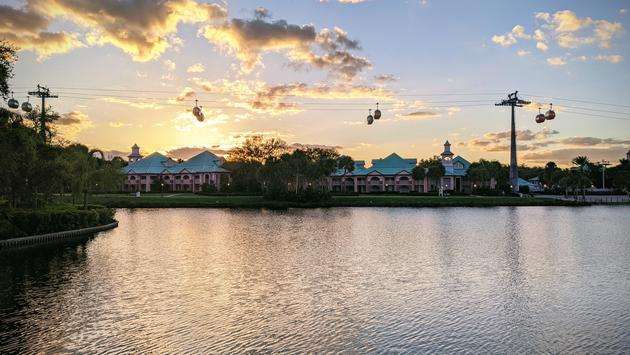
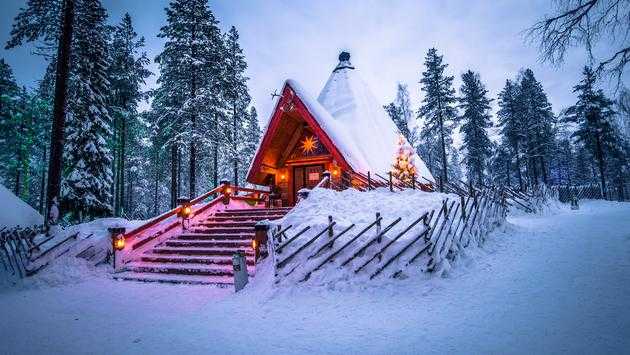
Families Can Virtually Visit Santa With Finnair
December 20,2021
Popular articles

Public Donates More Than $100K To Harassed Hotel Worker
January 02,2022
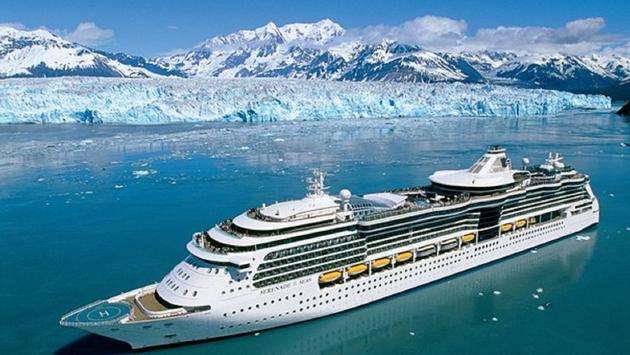
President Biden Signs Law To Restart Cruising in Alaska
January 01,2022

New Proposal Would Create 24-Hour Nightlife Zones in New York City
December 31,2021
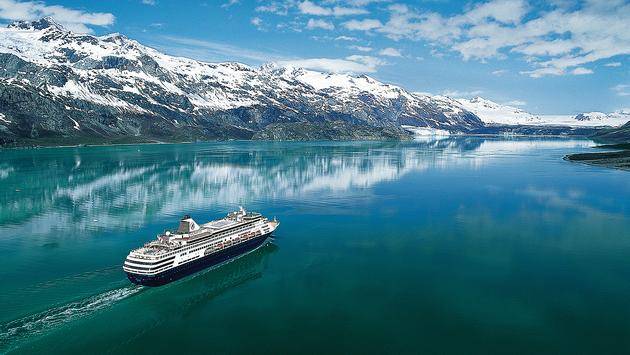
Holland America Line Launches 'BIG' Wave Season Offer
December 23,2021
Categories
Favorite articles
Riviera Nayarit Consolidates Air Connectivity With New Routes
January 03,2022
Looking for a Black Friday Deal? Try Summer 2021 Travel
December 30,2021
Kauai Drops Out of Hawaii’s Pre-Travel Testing Program
December 28,2021
Most popular articles
Riviera Nayarit Proves Resilience With New Hotel Openings
January 04,2022
Large Cruise Ships Return to Alaska
December 29,2021
How to Score Free Disney World Theme Park Tickets in 2021
December 26,2021
Hotel Xcaret Arte To Make Its Debut in July 2021
December 25,2021
Families Can Virtually Visit Santa With Finnair
December 20,2021
Popular articles
Public Donates More Than $100K To Harassed Hotel Worker
January 02,2022
President Biden Signs Law To Restart Cruising in Alaska
January 01,2022
New Proposal Would Create 24-Hour Nightlife Zones in New York City
December 31,2021
Holland America Line Launches 'BIG' Wave Season Offer
December 23,2021

